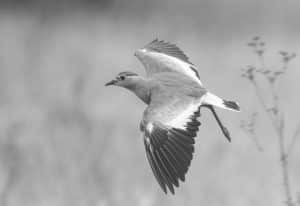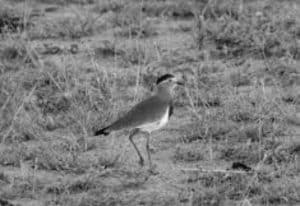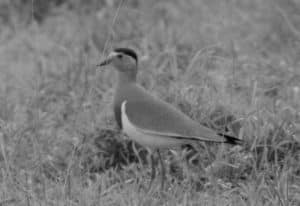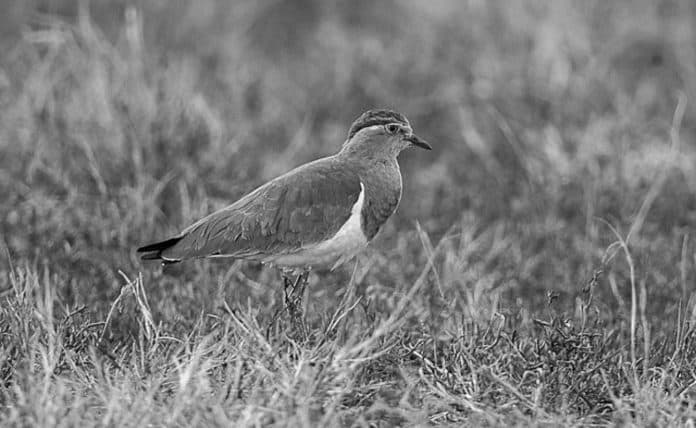Introduction to the Brown-Chested Lapwing
Welcome to Tanzania, home to the mesmerizing Brown-Chested Lapwing in Tanzania. This stunning bird is a true spectacle, with its vibrant colors and unique features. In this article, we will explore the geographic distribution, physical characteristics, breeding behavior, diet, conservation status, and best spots to observe this remarkable species. So, grab your binoculars and let’s dive into the world of the Brown-Chested Lapwing in Tanzania.
Geographic distribution and habitat of the Brown-Chested Lapwing in Tanzania

The Brown-Chested Lapwing is primarily found in the eastern regions of Tanzania, including the coastal areas and the eastern highlands. It prefers open grasslands, marshes, and wetlands, making it a common sight near rivers, lakes, and ponds. These habitats provide the perfect conditions for the lapwing to forage for food and build its nests.
Physical features and characteristics of the Brown-Chested Lapwing
The Brown-Chested Lapwing is a medium-sized bird, measuring around 30 centimeters in length. Its most striking feature is its plumage, consisting of a brown chest and wings, contrasting beautifully with its white belly and face. The wings are adorned with striking black and white patterns, which are displayed during flight. The bird’s long legs are a pale yellow color, providing a stunning contrast to its overall appearance.
The lapwing’s beak is short and stout, allowing it to probe the ground in search of insects and small invertebrates. Its eyes are large and dark, providing excellent vision to spot prey and potential threats. The bird’s call is a series of high-pitched, melodious notes, often heard during courtship displays and territorial defense.
Breeding behavior and nesting habits of the Brown-Chested Lapwing
During the breeding season, which typically occurs between November and February, the Brown-Chested Lapwings engage in intricate courtship displays. The male lapwing will perform an elaborate dance, flapping its wings and calling out to attract a mate. Once a pair is formed, they will establish a territory and build a nest on the ground, usually near water bodies.
The nest is a shallow scrape in the ground, lined with grass and twigs. The female will lay two to three eggs, which both parents take turns incubating for about a month. The chicks hatch covered in down feathers and are precocial, meaning they are able to walk and feed themselves shortly after hatching. The parents fiercely protect their young from predators, often feigning injury to lead potential threats away from the nest.
Diet and feeding habits of the Brown-Chested Lapwing
The Brown-Chested Lapwing is an opportunistic feeder, mainly consuming insects, worms, and small invertebrates. It uses its sharp beak to probe the ground in search of food, often in shallow water or moist soil near its habitat. The lapwing also feeds on small crustaceans and mollusks found in wetland areas.
These birds are known for their unique feeding behavior called “foot-trembling.” They rapidly vibrate one foot in the water or mud, disturbing small organisms and enticing them to the surface. The lapwing then swiftly snatches its prey using its beak. This feeding technique is not only effective but also fascinating to observe.
Conservation status and threats to the Brown-Chested Lapwing population in Tanzania

The Brown-Chested Lapwing is currently classified as a species of Least Concern on the IUCN Red List, thanks to its relatively stable population. However, like many bird species, it faces several threats in Tanzania. Habitat destruction due to agriculture, urbanization, and drainage of wetlands is a significant concern. Pollution and water contamination also pose a risk to the lapwing’s food sources and nesting sites.
Conservation efforts are crucial to protect the Brown-Chested Lapwing and its habitat. Establishing protected areas, raising awareness among local communities, and implementing sustainable land-use practices are essential steps towards safeguarding this magnificent bird for future generations.
Best places to spot the Brown-Chested Lapwing in Tanzania
Tanzania offers numerous opportunities to observe the Brown-Chested Lapwing in its natural habitat. Some of the best places to spot these birds include the Selous Game Reserve, Mikumi National Park, and the wetlands around Lake Manyara. These areas provide a rich diversity of bird species, making them ideal for birdwatching enthusiasts.
Remember to be patient and keep your eyes peeled for the distinctive colors and patterns of the lapwing. Early mornings and late afternoons are the best times for birdwatching, as the lapwings are often more active during these periods. So, grab your camera and binoculars, and get ready for an unforgettable birding experience in Tanzania.
Tips for birdwatching and photographing the Brown-Chested Lapwing
To make the most of your birdwatching and photography experience with the Brown-Chested Lapwing, here are some helpful tips:
- Pack the right gear: Bring your binoculars and a telephoto lens to get a closer look at the lapwings without disturbing them.
- Stay still and be patient: Birds can be easily startled, so find a good spot and wait quietly for them to come closer. Avoid sudden movements or loud noises that could scare them away.
- Observe their behavior: Understanding the lapwings’ feeding and nesting habits will help you anticipate their movements and capture unique moments with your camera.
- Respect their space: Keep a safe distance from the birds to avoid disturbing them or their nests. Remember, their well-being comes first.
- Be mindful of the environment: Leave no trace behind and follow any park or reserve regulations to protect the lapwings’ habitat and ensure their continued presence.
Interesting facts and trivia about the Brown-Chested Lapwing

Here are some fascinating facts about the Brown-Chested Lapwing:
- The lapwing’s scientific name, Vanellus superciliosus, refers to its raised crest of feathers above the eyes, giving it a “super eyebrows” appearance.
- Lapwings are known for their aerial acrobatics, performing impressive courtship flights with twists, turns, and dives.
- These birds have a unique defense mechanism. When their nests are threatened, they will feign injury to distract predators, luring them away from their vulnerable young.
- The Brown-Chested Lapwing is a highly vocal species, using a variety of calls to communicate with its mate and defend its territory.
- Lapwings are monogamous birds, forming strong pair bonds that can last for multiple breeding seasons.
Conclusion
The Brown-Chested Lapwing is truly a sight to behold in Tanzania. Its vibrant colors, intricate courtship displays, and unique feeding habits make it a fascinating species to observe and photograph. However, it is essential to remember our responsibility in preserving their habitat and ensuring their continued survival.
By raising awareness, supporting conservation efforts, and practicing responsible birdwatching, we can contribute to the protection of the Brown-Chested Lapwing and other remarkable bird species in Tanzania. So, let’s cherish these moments in nature and strive to be stewards of our natural world.


































